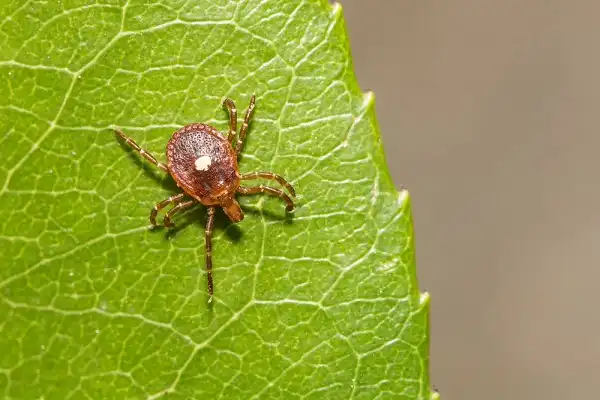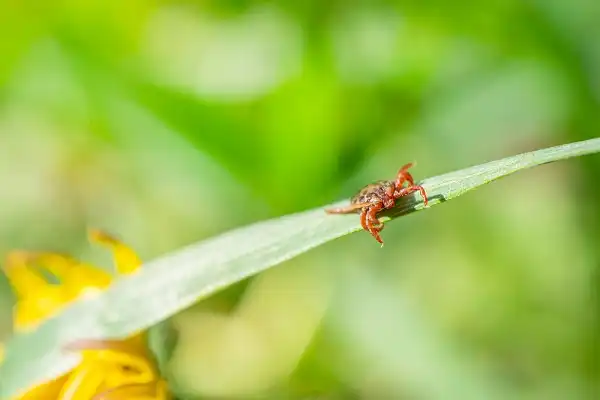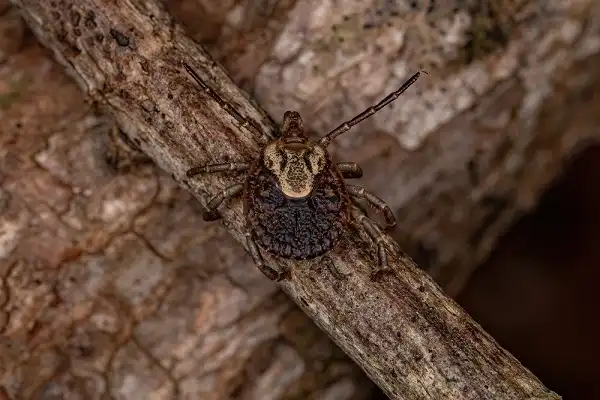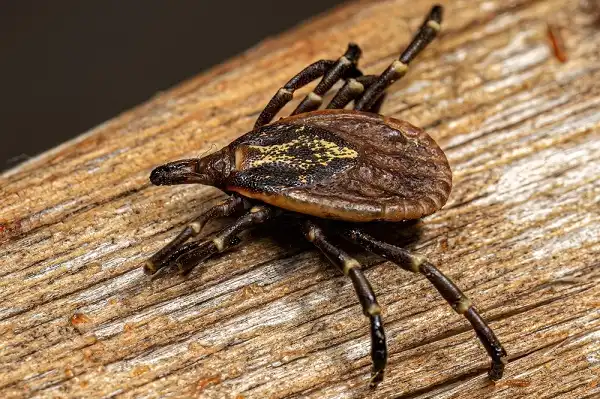Ticks are small, arachnid-like creatures that feed on the blood of mammals, birds, and reptiles. They are carriers of disease and can cause serious health problems in humans if they are not removed properly. Ticks are most active in the spring and summer months, but can be found year-round in warmer climates. If you find a tick on your body, it is important to remove it immediately to avoid potential illness.

Tick Description
Ticks are hard, dark-brown or black arachnids that have four pairs of legs and a small head with a mouthpart designed to pierce the skin of their hosts. They can range in size from as small as a pinhead to as large as a dime. Female ticks tend to be larger than their male counterparts. It is important to take precautions when outdoors during warmer months when ticks are more active in order to minimize your chance of being exposed to them such as wearing light clothing that covers your arms and legs effectively and using insect repellent containing DEET on uncovered skin areas.
Tick Habitat
Ticks thrive in humid, moist environments and can be found in a variety of habitats including forests, fields, grasslands, and even urban parks. They typically prefer to live in areas with a shaded canopy or brush cover, as these provide protection from direct sunlight and humidity which can quickly dry out a tick’s body. Ticks are most active during the spring and summer months when temperatures are warmer, but they can survive through winter if the environment is warm enough.
These parasites require a blood meal from their hosts to complete their life cycle which involves an egg stage followed by several larval and nymphal stages. In addition to living in grassy areas such as backyards or parks, ticks can also inhabit wooded environments where fallen leaves provide insulation for them from cold weather conditions. They also prefer to host near sources of water such as streams, ponds or wetlands since moisture is necessary for survival.
Tick Diet
Ticks feed on animal blood, and they have a wide range of hosts. Depending on the species, ticks may feed on small mammals such as mice, squirrels and rabbits or larger animals such as deer. Some species, like the black-legged tick (Ixodes scapularis) are even known to feed on humans. In order to receive adequate nutrition ticks may need to feed multiple times in their life cycle stages and so they often seek out hosts that are available throughout the year.

Tick Size
Ticks are very small in size, ranging from around 2mm to 5mm long. Depending on the species and life cycle stage ticks may have a more elongated shape or be more round in appearance with an orange-brown colored body. Ticks have eight legs with their front pair usually being longer than their back two pairs. Adult female ticks are typically larger than males and can often be identified by the presence of an engorged abdomen filled with blood after they have fed on a host. The size of a tick can also vary depending on whether it has recently received a blood meal or not as well as what stage of its life cycle it is currently in or if it is nearing full maturity. For example, during its nymph stage a tick is much smaller than when it reaches adulthood.
Tick Lifespan
The lifespan of ticks varies depending on species as well as environmental conditions but generally they can survive anywhere from one month to several months providing they have received adequate nourishment throughout each stage. Ticks have a three-host life cycle that requires them to feed on blood at each stage in order to survive and reproduce. This can take anywhere from one month to several months depending on the species as well as environmental conditions such as temperature and humidity.
During their larval stage, ticks hatch from eggs laid by adult female ticks after they’ve ingested blood from a host and are looking for a new place where they can molt into the next stage of development. Once on the ground, the larvae will wait for a passing animal or person so they can attach themselves in order to receive their first meal of blood. After feeding, ticks enter into the nymphal stage which involves molting again and seeking out another host for their second blood meal. Once the nymph has fed, it will mature into an adult male or female tick which can then seek out a final host before mating and laying eggs to start the cycle all over again.
Tick Behavior
Despite the fact that ticks are not considered to be aggressive, they are capable of transmitting a variety of diseases to humans and animals through their saliva as well as triggering allergic reactions or infections depending on where they attach themselves. Therefore, it’s important to take precautionary steps when outdoors in order to reduce your chances of coming into contact with them. By following these steps you’ll be able reduced your chance of being exposed to any illnesses associated with ticks.

Tick Speed
Ticks are slow-moving creatures, meaning they are unable to run or jump from one host to another. Depending on the species, tick movement can range from being very slow and methodical to being fast and agile. The average speed of a tick is about 0.4 miles per hour (0.6km/h) but some species can achieve speeds of up to 4 miles per hour (6.4km/h). Tick speed is not only dependent on the species but also environmental conditions such as temperature, humidity and vegetation. In general, warmer temperatures will increase a tick’s rate of movement while colder climates will slow them down.
Tick Hunting
Ticks are most active during the warm months of the year, especially during humid and damp conditions. When ticks are hunting for a host they will generally climb up tall grasses or shrubs and wait until something passes by that they can latch onto. Additionally, some species may also use their specialized mouthparts known as Haller’s organs in order to sense hosts from several feet away. Therefore, it’s important to take extra precautionary steps when outdoors such as wearing long sleeves and pants and avoiding tall grasses or weeds.

Conclusion
In conclusion, ticks are small but dangerous creatures that can cause serious illnesses if not taken seriously. It is essential to take precautionary steps when outdoors in order to reduce your chances of coming into contact with them and protect yourself from the diseases they carry. By following these tips you should be able to greatly reduce your risk of being exposed to any tick-borne illnesses. Always remember: always be aware of your surroundings and take precautions against tick bites whenever possible! With this knowledge, you will have a much better chance at staying healthy in an environment where ticks may be present.
Frequently Asked Question

